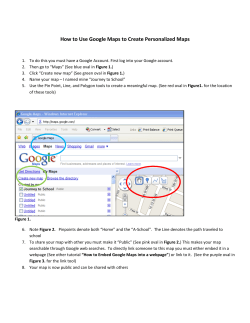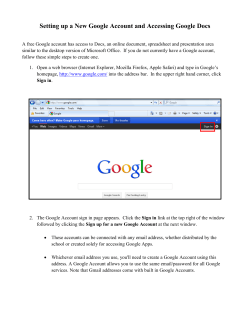
José Pérez and Sample Peresianus Page(s) of 1859
José Pérez and Sample Peresianus Page(s) of 1859
by Randa Marhenke (April 8, 2010; Last revision: September 3, 2011)
Having read in George Stuart's Quest for Decipherment (1992) and in Glass' articles in the Handbook of
Middle American Indians (1973, 1975) that a certain José Pérez had published an illustration of a page
from the Paris Codex in 1859, I decided to pursue it. I thought it should be a fairly simple matter to find
the publication, get a copy of the page, and ask to have it put it up on FAMSI. Though it was
remarkably easy to find, I was amazed by the variety of what I found, both in what was shown, and in
how it was shown.
I found three copies of the article written by Pérez on Google, and one in a local library. Four samples
altogether, and all different. The libraries represented were the Widener Library of Harvard Universty,
the New York Public Library (NYPL), the University of Michigan Library, and the McHenry Library of
the University of California at Santa Cruz. All examples did state in the table of Plates ("Planches")
listed at the back of the volume that there was a "fac-simile d'un ancien manuscrit américain" [facing]
page 36. There we had some uniformity. But actually, though three of the examples had a plate of the
Paris Codex facing page 36, two of them had a plate facing page 56. Perhaps typically, Paris page 22
was shown, with the upper center-left figure in bright blue-green, perhaps turquoise, with darker spots
of the same blue-green, and the encircling cord in the blue-green. (The example from the Michigan
library was missing some of the blue-green coloration in the cord). One (the NYPL example) had no
color; it was a plain outline drawing. (I verified this with an e-mail to the NYPL; fortunately, not only
does Google generally copy everything of the book, including its covers, but it also states what
institution loaned the book for copying). Apparently, the color was to be added separately and after the
printing of the plain outline, but this copy never received it. One example had two plates of the Paris,
one facing page 36, another facing page 56! The others only had one, though one example was missing
the page after page 56 on through page 58, that is, the volume went directly from page 56 to page 59, so
I don't really know if another plate would have been facing page 56 or not, if the book had not been
defective. I could guess this volume was actually missing the pages, and that this was not a fault of the
Google copying, since one of the most common (of the now rare) problems that Google scans has is that
two leaves, instead of one, get turned together, with an even-odd (not odd-even) numbered sequence of
pages missing. I verified my reasoning by telephoning the University of Michigan Library, and found
out that yes, the pages were actually missing from the volume.
What about the copy with two plates? This was the most surprising of all. This copy was from the
Widener Library at Harvard University. The Google scans showed not only Paris page 22, but Paris
page 21 also, as a sort-of unannounced bonus. None of the volume copies checked listed showing any
more than one plate of the Paris Codex. Telephoning the Widener Library, I found that the Paris page 21
was indeed included, facing page 36, and on a different type of paper. The paper stock was brown-tan
(somewhat as shown in the Google scan that was obtained from the Google PDF file); the browning
appeared not to be from acidification. The Paris page 22 appeared in the Google scan to be uncolored
and shaded in gray. It turns out that the Google scan of that page had been a black-and-white scan of a
colored page (as they frequently are), for in the volume itself, there was a darkish or muddyish green
(anyway, certainly not a shade of turquoise) on the upper center-left figure and within the cord. The
figure seemed to be covered with black spots, with the green perhaps applied as a wash (personal
communications: Cynthia Hinds, Widener Library, March 19-April 2, 2010).
-1-
On the pages following the references for this paper, are a table, summarizing these results, and copies
of the renditions from the four examples. I think the renditions of the two Paris pages were done quite
well, and produced very clear copies of rather complicated scenes. But though I had succeeded in
finding the Paris page(s) as shown in the José Pérez article, I must admit that this search has, perhaps
more importantly, resulted in quite a lesson on printing and publishing practices of the mid-19th century.
ACKNOWLEDGEMENTS
I wish to credit Harvard College Library for permission to use their copy of Revue orientale et
américaine, t.1, Sci 3080.30 in making the color scan shown in the last plate of this paper.
Thanks go to Karl Marhenke, my husband, who took the photograph of the Plate of the volume in the
University of California at Santa Cruz—and then used his expertise in Paint Shop Pro to straighten out
the slight keystone effect.
I thank Google, for providing, in Google Books, copies of so many old volumes, which otherwise would
be close to impossible to consult and enjoy.
I cannot begin to express my appreciation for the librarians consulted for this paper. All were
remarkedly courteous and helpful. When I telephoned Carol McKendry, of the Buhr Shelving Facility
of the University of Michigan Library, she immediately got the book off the shelf and answered my
questions, confirming that their copy was indeed missing some pages (March 17, 2010). She also,
unbeknownst to her, gave me the confidence to try telephoning the other libraries.
Stephen Shepard, of the NYPL, took the time to write me an e-mail, confirming that their volume indeed
had no coloring in the Plate (March 22, 2010).
Nicholas Nardini of the Widener Library of Harvard University, called up their volume from the
depository (March 17, 1010). Cynthia Hinds, from the same library, put up with my frequent calls,
answered my numerous questions (various communications between March 19 and April 14, 2010), and
even sent me scans from their volume--one of which I have included herein (the last picture of a Plate
shown in this paper).
Hooray for librarians!
-2-
REFERENCES
Glass, John B.
Robertson,
Donald
1975
A Census of Native Middle American Pictorial Manuscripts, in Cline, Howard F.
(Volume Editor), Guide to Ethnohistorical Sources, Part Three, in Wauchope, Robert
(General Editor), Handbook of Middle American Indians, vol. 14, University of Texas
Press, Austin, p. 179.
Glass, John B. Annotated References, in Cline, Howard F. (Volume Editor), Guide to Ethnohistorical
1975
Sources, Part Four, in Wauchope, Robert (General Editor), Handbook of Middle
American Indians, vol. 15, University of Texas Press, Austin, p. 675.
Pérez, José
1859
Sur un ancien manuscrit américain inédit, in Léon de Rosny (editor), Revue
orientale et américaine, t. 1, Challamel ainé, Paris, pp. 35-39, and sometimes: page
facing p. 56.
Accessible from:
http://books.google.com/books?id=AWQFAAAAMAAJ
http://books.google.com/books?id=PBoYAAAAYAAJ
http://books.google.com/books?id=JVQ8AAAAYAAJ
Stuart,
George E.
1992
Quest for Decipherment: A Historical and Biographical Survey of Maya
Hieroglyphic Investigation, in Elin C. Danien , Robert J. Sharer, New Theories
on the Ancient Maya, University Museum Monograph 77, University Museum
Symposium Series Volume 3, Philadelphia , p21.
.
-3-
Table of Paris Renderings in Different Examples of José Pérez's Paper
Identification
Labels for
Volumea
Contributing
Library
Location of
Paris p. 21
in volume
Location of
Paris p. 22
in volume
Type of Drawing
(for Paris p. 22)
--------------------Plain
Color
Outline Present
Call No.:
AP20.R4, vol. 1
University
of California
at Santa Cruz
(McHenry
Library)
(absent)
facing
p. 36
no
yes
Call No.: GN2.S678,
vol. 1
B 910.225
(number on cover)
Google:
AWQFAAAAMAAJ
University
of Michigan.
(Acquired
from the
Henry Vignaud
Library).
Now in the
university's
Buhr Shelving
Facility.
? (missing
pages after
p. 56 through
p. 58 from
the volume)
facing
p. 36
no
yes
Call No.: OAA (Revue
orientale et américaine) v. 1 (1859)
Bar Code:
3 3433 08188207 2
Google:
PboYAAAAYAAJ
New York
Public Library
(Astor Library)
(Schwarzman
Building)
(absent)
facing
p. 56
yes
no
Call No.: Sci 3080.30
t. 1 (1859)
Bar Code: HX3K3L
[or: HX 3K3L B]
Google:
JVQ8AAAAYAAJ
Harvard
(Widener
Library)
facing
p. 36
facing
p. 56
no
yesb
Notes to table:
a. Call numbers (each one labelled as "Call No.") are given. Other library numbers, such as bar codes,
are given when possible. For the Google scans, part of the Google URL is also given, labelled as
"Google".
b. This rendition of Paris p. 22 was shown with gray shading in the Google scan online, but the book
itself showed it with color.
-4-
A photograph of the rendition of page 22 of the Paris Codex shown in Volume 1 (1859) of the Revue
orientale et américaine that is held by the McHenry Library at the University of California at Santa
Cruz, California
Photographed by Karl Marhenke
-5-
A Google scan taken of the rendition of page 22 of the Paris Codex shown in Volume 1 (1859) of the
Revue orientale et américaine that is held by the Library of the University of Michigan, Ann Arbor,
Michigan
-6-
A Google scan taken of a rendition of page 22 of the Paris Codex shown in Volume 1 (1859) of the
Revue orientale et américaine that is held by the New York Public Library, New York
-7-
A screen-capture taken of the rendition of Paris Codex page 21 which was in the PDF file downloaded
from Google, ultimately from Volume 1 (1859) of the Revue orientale et américaine that is held by the
Widener Library, Harvard University, Cambridge, Massachusetts
-8-
A scan of Paris Codex page 22 from the Harvard College Library copy of Revue orientale et
américaine, t.1, Sci 3090.30
Scanned by Cynthia Hinds of the Widener Library of Harvard University
-9-
Title Page of the Revue orientale et américaine, t. 1, 1859
-10-
Table of Contents of the Revue orientale et américaine, t. 1, 1859
-11-
Bibliography etc., the listing of Plates ("Planches"), and Errata given in the Revue orientale et
américaine, t. 1, 1859
-12-
© Copyright 2025











